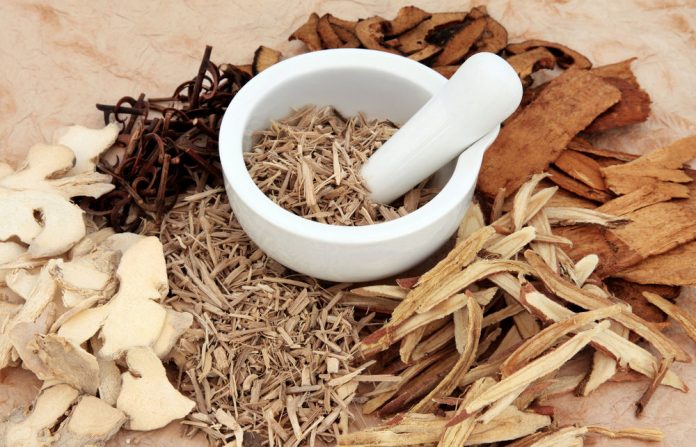Traditional Chinese Medicine (TCM) has been used for thousands of years to promote overall health and well-being. At its core, TCM is rooted in the belief that the body is a complex system of interconnected parts, and the elements that make up the universe are also present within us. TCM focuses on balancing these elements to promote healing within the body, mind, and spirit. The five elements of TCM – wood, fire, earth, metal, and water – are integral to understanding how the body functions as a whole. For learn element of traditional Chinese Medicine visit the website.

If you are unfamiliar with TCM or are interested in learning more about it, this guide is for you. In this comprehensive guide, we will dive deep into the five elements of TCM, exploring their meanings and functions within the body. We will also examine how imbalances in these elements can lead to various health issues and provide tips on how to restore balance through TCM practices such as acupuncture, herbology, and meditation.
Contents
Whether you are seeking natural methods to
1. Introduction to Traditional Chinese Medicine and the Five Elements.
Welcome to “The Five Elements of Traditional Chinese Medicine: A Comprehensive Guide,” where we will explore the foundations of Traditional Chinese Medicine (TCM) and its connection to the Five Elements. TCM is a holistic approach to health that has been used for over 3,000 years in China and is still widely practiced today. This guide will provide an overview of TCM and the Five Elements, as well as how they are interconnected and can be utilized for optimal health and wellbeing. Understanding TCM and the Five Elements can lead to a deeper understanding of the body, mind, and spirit connection and can promote a balance in all aspects of life.
2. Wood Element: description, associated organs, and characteristics.
Traditional Chinese Medicine (TCM) is based on the philosophy that the human body is a microcosm of the universe and is composed of five elements – Wood, Fire, Earth, Metal, and Water. Each element represents a distinct set of qualities and characteristics that interact to maintain balance and harmony within the body. In TCM, the Wood Element is associated with the liver and gallbladder organs and is characterized by growth, development, and flexibility. In Chinese philosophy, Wood is considered the element of spring, as it represents the energy of new growth and regeneration. The Wood Element is also associated with the emotion of anger and the healing color of green. Balanced Wood energy allows for creativity, flexibility, and the ability to adapt to change, while imbalanced energy can result in frustration, irritability, and irritations of the liver and gallbladder. By understanding the characteristics of the Wood Element and its associated organs, TCM practitioners can diagnose and treat a variety of health issues effectively.
3. Fire Element: description, associated organs, and characteristics.
The Fire element is one of the five elements of Traditional Chinese Medicine, alongside Wood, Earth, Metal, and Water. Fire represents expansion, growth, and transformation, and is associated with the heart, small intestine, pericardium, and San Jiao (Triple Burner) organs. The Fire element is also linked to the tongue and speech in Traditional Chinese Medicine. In terms of characteristics, Fire is known to be warm, passionate, and expressive. It can also be associated with joy, excitement, and creativity, but when it is out of balance, it can cause lack of emotional control, restlessness, and insomnia. Balancing the Fire element can be achieved through acupuncture, herbal medicine, and lifestyle changes such as practicing meditation or breathing exercises.
4. Earth Element: description, associated organs, and characteristics.
The Earth element is one of the five fundamental elements of Traditional Chinese Medicine (TCM), which represents nourishment, transformation, and grounding. It is associated with the stomach and spleen organs, which play important roles in digestion and metabolism. Earth element people are characterized by their stability, reliability, and their ability to create harmony in their surroundings, making them apt caregivers or support providers. They are nurturing and generous, exhibiting motherly qualities that are in tune with the energy and characteristics of the Earth element. When the Earth element is in balance, individuals experience a sense of comfort, security, and stability in their lives, while imbalances can lead to physical symptoms such as bloating, poor digestion, and a tendency towards overthinking and worry. It is important to maintain balance in the Earth element to promote physical health and emotional balance.
5. Water Element: description, associated organs, and characteristics.
The Water element is one of the five elements in Traditional Chinese Medicine that plays a crucial role in maintaining balance and harmony within the body. It represents the winter season, which is characterized by darkness and coldness. The Water element is associated with the organs of the Kidneys and the Bladder, which are responsible for regulating the water metabolism in the body. The Kidneys store the essence of life, which includes reproductive energy and genetic inheritance, while also maintaining the balance of all the other organs in the body. The Bladder is responsible for eliminating waste and excess fluids from the body. The Water element is also characterized by specific qualities such as stillness, quietness, the ability to merge and flow, and a sense of depth and wisdom. When balanced, it leads to a strong sense of willpower, inner strength, and resilience, but when imbalanced, it can lead to fear, insecurity, and lack of motivation. Balancing the Water element requires nourishing the Kidneys and Bladder, eating warming and nourishing foods, getting enough rest and sleep, and cultivating practices that promote inner reflection and connection to our deeper selves.
Conclusion
Traditional Chinese Medicine’s five elements offer a comprehensive pathway to understanding health and well-being. Suitable for people of all ages, these elements are based on the laws of nature and the human body’s interaction with them. By understanding the interplay between wood, fire, earth, metal, and water, we can work to maintain balance and address any imbalances. It is worth noting that this article only provides an introduction to the five elements, and there is much to learn from Traditional Chinese Medicine’s rich and extensive body of knowledge.



